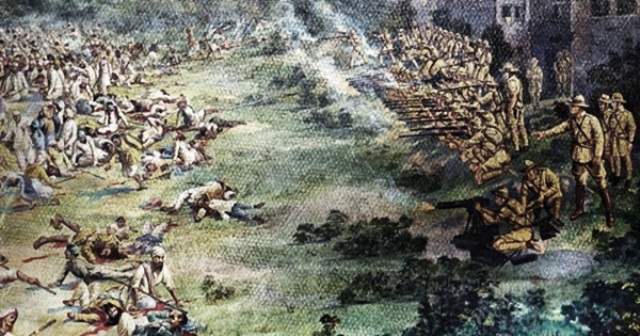Today marks 104 years since the Jallianwala Bagh massacre (April 13, 1919). Records kept by the British government show that the indiscriminate firing ordered by Colonel Reginald Dyer resulted in the deaths of 379 persons, including men, women, and children, and 1,200 injuries.
One of the worst chapters in Indian history occurred at Jallianwala Bagh on April 13, 1919, Baisakhi Day, when Brigadier-General Reginald Edward Harry Dyer gave the order for 50 British Indian Army soldiers to fire on a throng.
On March 8, 1919, the then British Government implemented the Rowlatt Act. Under this law, the British government could send any Indian to jail without trial.
A nationwide voice was raised against this black law. There were jams and demonstrations at various places. In Punjab, popular leaders there Dr. Satyapal and Saifuddin were arrested. The arrest of these leaders and the protests against the Rowlatt Act on 10 April resulted in the death of some protesters in police firing. Seeing the situation worsening, the responsibility of law and order was handed over to Brigadier General Dyer by imposing martial law in Punjab.
Incidents in points on April 13, 1919
Public meetings were forbidden under the brutal Martial Law that the British had imposed. Unaware, on the holiday of Baisakhi, a mass of unarmed protesters and pilgrims assembled at Jallianwala Bagh in Amritsar, Punjab.
In order to peacefully protest the arrest of freedom activists Satya Pal and Dr. Saifuddin Kitchlew, the crowd gathered at the location.
Colonel Dyer arrived at the location with roughly 50 soldiers and instructed them to open fire on those folks after learning about the gathering.
There were around 1,650 rounds fired during the roughly 10-minute shooting.
The Jallianwala Bagh massacre left 379 people dead and 1,200 injured, according to the British administration. According to some records, close to a thousand people died.
Indians were outraged by the massacre, and Mahatma Gandhi called for a movement of non-cooperation.
Despite this, the people’s protest against the Rowlatt Act did not stop.
On 13th April, a meeting was held at Jallianwala Bagh in Amritsar in which 25-30 thousand people were present. Then General Dyer reached there with his soldiers and ordered to fire on the unarmed people involved in the meeting. There was continuous firing on people for 10 minutes. Amidst the huge commotion, a large number of people jumped into the well to save their lives. Due to the narrow way of exit, many people lost their lives in the stampede. About one thousand people died in this firing. However, the committee formed to investigate the incident put the death toll at 379. This cruel action of the British changed the course of the Indian freedom struggle.

